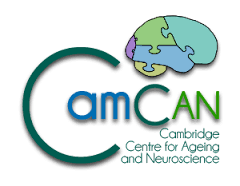CBSU bibliography search
To request a reprint of a CBSU publication, please
click here to send us an email (reprints may not be available for all publications)
Unlike posterior brain areas ventrolateral prefrontal cortex is only active during intentional processing
Authors:
DOVE, A., Epstein, R. & OWEN, A.M.
Reference:
Brain Impairment, 6(2), 139-140, 2005
Year of publication:
2005
CBU number:
6118
Abstract:
Objectives: This study investigates how activity in the ventrolateral prefrontal cortex (VLPFC) and in posterior brain areas is modulated by purposeful processing or 'intention', by the stimulus type, and by the nature of the task (encoding or retrieval). Methods: In an fMRI study faces, scenes and abstract paintings were presented with the instruction to remember the picture ('intentional encoding'), to decide whether it has been presented previously ('intentional retrieval') or to just look at it for the first ('incidental encoding') or second time ('incidental re-viewing'). Results: In striking contrast to the pattern of activity in the posterior brain regions, the VLPFC was only active whenever the stimuli were viewed with a specific purpose or intention in mind (to remember it or to make a decision). In all other areas, 'just looking' or simply taking in information from the environment without any specific plan was sufficient to elicit significant activity, if a 'suitable' stimulus was presented. Passively viewing faces and scenes elicited strong activity in the fusiform face area (FFA) and parahippocampal place area (PPA), respectively. An area in the medial temporal lobe (MTL) was active during passively viewing any of the stimuli. Conclusions: Whilst intention had an effect on the VLPFC and the posterior brain areas, VLPFC was the only area which was active only in the intentional condition. This result is in line with the hypothesis that the VLPFC is involved in executive processes that operate on information available in posterior association cortical areas (Petrides, 1994). The relevance of this finding for rehabilitation will be discussed.

 MRC Cognition and Brain Sciences Unit
MRC Cognition and Brain Sciences Unit

